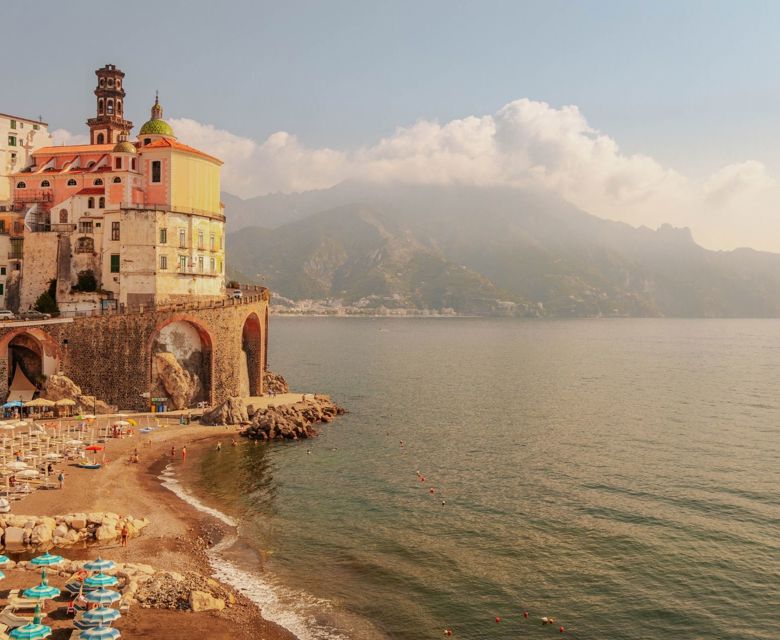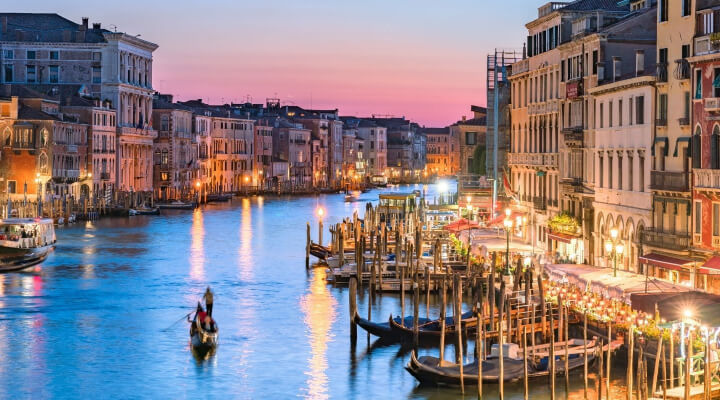Italy FAQs

Italy FAQs
Planning to visit Italy
Q. What is the best time to visit Italy?
Italy is a year-round destination, but the best time depends on your preferences. Spring (April to June) and autumn (September to October) offer mild weather, fewer crowds, and vibrant scenery. Summer (July to August) is great for coastal destinations like the Amalfi Coast but tends to be hot and busy. Winter (November to March) is perfect for exploring cities like Rome and Florence or skiing in the Alps.
Q. Where to go on holiday in Italy?
Italy has something for everyone. Rome is rich in history and iconic landmarks like the Colosseum, Venice is a romantic city of canals, and Florence is the heart of Renaissance art and architecture. The Amalfi Coast is perfect for seaside beauty, while Tuscany offers rolling hills, vineyards, and quaint villages. For something unique or unexplored, explore Sicily or Puglia for stunning beaches and authentic cuisine. Our Italy travel specialists can help craft the perfect itinerary tailored to your interests.
Q. How long should I go to Italy for a holiday?
We recommend at least 10–14 days to explore Italy’s highlights. This allows you to experience multiple regions, from the historic cities of Rome and Florence to the scenic countryside of Tuscany and the stunning Amalfi Coast. If you have more time, you can include hidden gems like Cinque Terre, Lake Como, or Sicily.
Q. How can I find the best holiday package to Italy?
Check out our Italy deals section on the website or subscribe to receive exclusive offers. Our Italy travel specialists can help create a custom itinerary to suit your preferences and ensure you have an unforgettable holiday.
Before you leave
Q. Where to stay in Italy?
Italy offers a wide range of accommodations, from luxury hotels and historic palazzos to charming agriturismi (farm stays) and boutique B&Bs. For an authentic experience, consider staying in a countryside villa in Tuscany or a traditional trullo in Puglia. Major cities like Rome, Florence, and Venice have accommodations for every budget. Let us help you find the perfect place to stay.
Q. What is there to do in Italy?
Italy is brimming with experiences. Visit ancient ruins in Rome, admire Renaissance art in Florence, and cruise the canals of Venice. Explore the scenic Amalfi Coast, take a cooking class in Tuscany, or sip wine in the Chianti region. Don’t miss iconic landmarks like the Colosseum, Vatican City, and the Leaning Tower of Pisa. For food lovers, indulge in authentic pizza in Naples, fresh pasta in Bologna, and gelato everywhere. Check out our favourite things to see and do Italy.
Q. What should I pack for my trip to Italy?
· Comfortable walking shoes: Italy’s cobblestone streets require sturdy footwear.
· Layers: The weather can vary depending on the season and region.
· A reusable water bottle: Public water fountains, or "nasoni," are common and safe to use.
· Travel adapters: Italy uses type C, F, and L plugs (220V).
Q. Do I need travel insurance for Italy?
Yes, travel insurance is highly recommended. It ensures you’re covered for medical emergencies, trip cancellations, or unexpected interruptions.
While you are there in Italy
Q. How to get around in Italy?
Uber: Uber is available in most large Italian cities.
Taxi: Be aware that in Italy, taxi drivers start the metre from the moment they get the call, not when you actually get in, so it might be wiser to hail one (a registered one). In Rome, fares change depending on day and time; night time is more expensive, as are Sundays. And don’t be surprised if you get charged an additional €1 for each piece of luggage you pop in the boot.
Self-drive/ hire a car
Parking Rules vary from city to city but as a rule of thumb:
· Blue - parking is limited and you either must buy a ticket from a street machine and display it on your dash board, there will be a sign to tell you the maximum time allowed.
· Yellow - handicapped or loading zone, do not park in yellow spaces.
· Red - means resident only parking.
· White - can mean free parking or can mean resident only parking. The best bet is to park in a pay garage. If this is not possible, try to find a white marked space but read the signs carefully in case they are resident only.
Trains:
Traveling by train is a popular and efficient way to explore Italy, offering everything from regional to high-speed options. The country’s extensive rail network connects major cities and scenic spots, making train travel a convenient choice.
For regional trains, remember to validate your ticket before departure to avoid fines. High-speed trains, like the Frecciarossa and Italo, provide quick and comfortable journeys between major hubs. Enjoy the scenic views and ease of travel as you explore Italy!
Q. What are some must-do activities in Italy?
Unlike most nations with ample tourist attractions, it’s actually the obvious things that offer the most fun in Italy. You absolutely must try a Tuscan red and glide the Venetian canals aboard a Gondola, and you should definitely eat pasta in a trattoria spilling into the street. Sip on a glass of spumante at a bar with a glorious balcony, speed days soaking up the Amalfi Coast sunshine and navigate a gleaming sailing boat across Lake Garda. If you leave without nursing an espresso at a pavement café or without seeing Michelangelo's David in Florence, the jaw-dropping Sistine Chapel, Pompeii, Sicily and every single inch of Rome, well, you’ll leave disappointed. It’s probably here we should mention you need at least six months in Italy. Check out our Italy section to find out our favourite things to see and do Italy.
Q. What are some family-friendly activities in Italy?
Giving your young kids a sly history lesson while they are having ample fun is one of Italy’s greatest tricks. This country spoils families with its seemingly endless mass of historical and cultural sights; what kid wouldn’t be fascinated by ruins, gladiator battlefields and an entire Roman town preserved by a volcano? In Rome, families like to time visits to the Vatican with the weekly papal address – which of the windows will the Pope appear from?
Unfortunately free entry to museums and galleries is usually akin with EU citizens under the age of 18, but NZ residents can also benefit from reduced admission fee (generally half the adult price) for children.
Aim to dine in traditional trattorias and osterie. Commonly family-owned, they are family-focused by default. Just be aware that Italians – even those with small children – eat late. Certain dining establishments won’t even consider opening until 8pm.
A few favs:
· Visit Rome’s Colosseum and Vatican museums with interactive family tours.
· Take a gondola ride in Venice or explore the colourful villages of Cinque Terre.
· Learn to make pizza and gelato in a family-friendly cooking class.
· Visit theme parks like Gardaland near Lake Garda.
· Hike trails in the Dolomites or relax on family-friendly beaches in Sardinia.
Q. Are there any hidden gems to explore in Italy?
Absolutely! Head to our Italy holidays section and find out must-do’s, hidden gems and much more to do in Italy.


